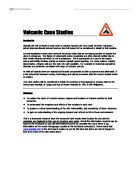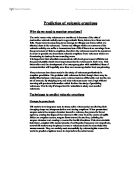The Chilean Government Emergencies Office declared a red alert for Chaitén town at 2pm local time on 2nd May. An evacuation of 1500 people from the town to shelters at Castro and Puerto Monnt began, with priority being given to the most vulnerable groups of people- the sick, the elderly and pregnant women. Further reports stated that the town’s supply of drinking water was suspended because of the danger of contamination from volcanic ash, so emergency water was brought in. The Army, Navy, Air Force, Police, Fire fighters and government were all involved in the emergency. On 3rd May, it was reported that 1221 people were evacuated by the Chilean Navy, and a further 500 were to be evacuated by the end of the day. Further evacuations using ships with a capacity of 1000 people happened on the 4th May. More water was brought in by the Navy on the 4th May, and was given to the Futaleufu and Palena districts which were without portable water supplies.
During the first week of the eruption, 80% of Chaitén town was damaged- sediment from flood waters buried buildings up to 1.5m and there was damage to the airport and marine facilities. On 6th May, another eruption happened which sent ash 30km high into the atmosphere. Due to this, the Chilean government ordered a total evacuation of people within 50km of Chaitén. The ash continued to affect air traffic in South America. The volcanic activity continued into February 2009, when a portion of the dome collapsed, sending a pyroclastic flow to within 4km of Chaitén town.
Why did it happen?
Chaitén is located above the Peru-Chile subduction zone, and in this convergent boundary, the Nazca plate is being subducted under the South American plate. There is more volcanic activity in the south of South America than the north, as the southern end of the plate is being subducted at a steeper angle than the north. The more dense Nazca plate is subducting under the western edge of the South American plate along the pacific coast of the continent, and this collision of plates is responsible for creating the Andes Mountains and the volcanoes. Because the oceanic lithosphere subducts beneath the continental lithosphere, a belt of volcanoes will be generated on continental crust, called a volcanic arc.
Who was affected by it happening?
The total population of Chaitén town was affected as everyone was evacuated away to other towns and cities. Due to the evacuation though, only 1 person died, and this was an elderly person who died at sea while en route for Puerto Montt. The environment and town was damaged more than the population. Forests near to the volcano were burned by pyroclastic flows and lateral explosions, and large parts of southern Argentina and Chile were coated with ash, which has had long term consequences for agriculture. This has not always been bad though, as the ash from the volcano adds new minerals to the soil. Lahars caused flooding in Chaitén town, depositing ash mud up to a metre in height. This damaged many buildings and filled the original course of the Chaitén River past the town. Because of this, the river created a new course through Chaitén town, which destroyed much of the town by July 2008.









